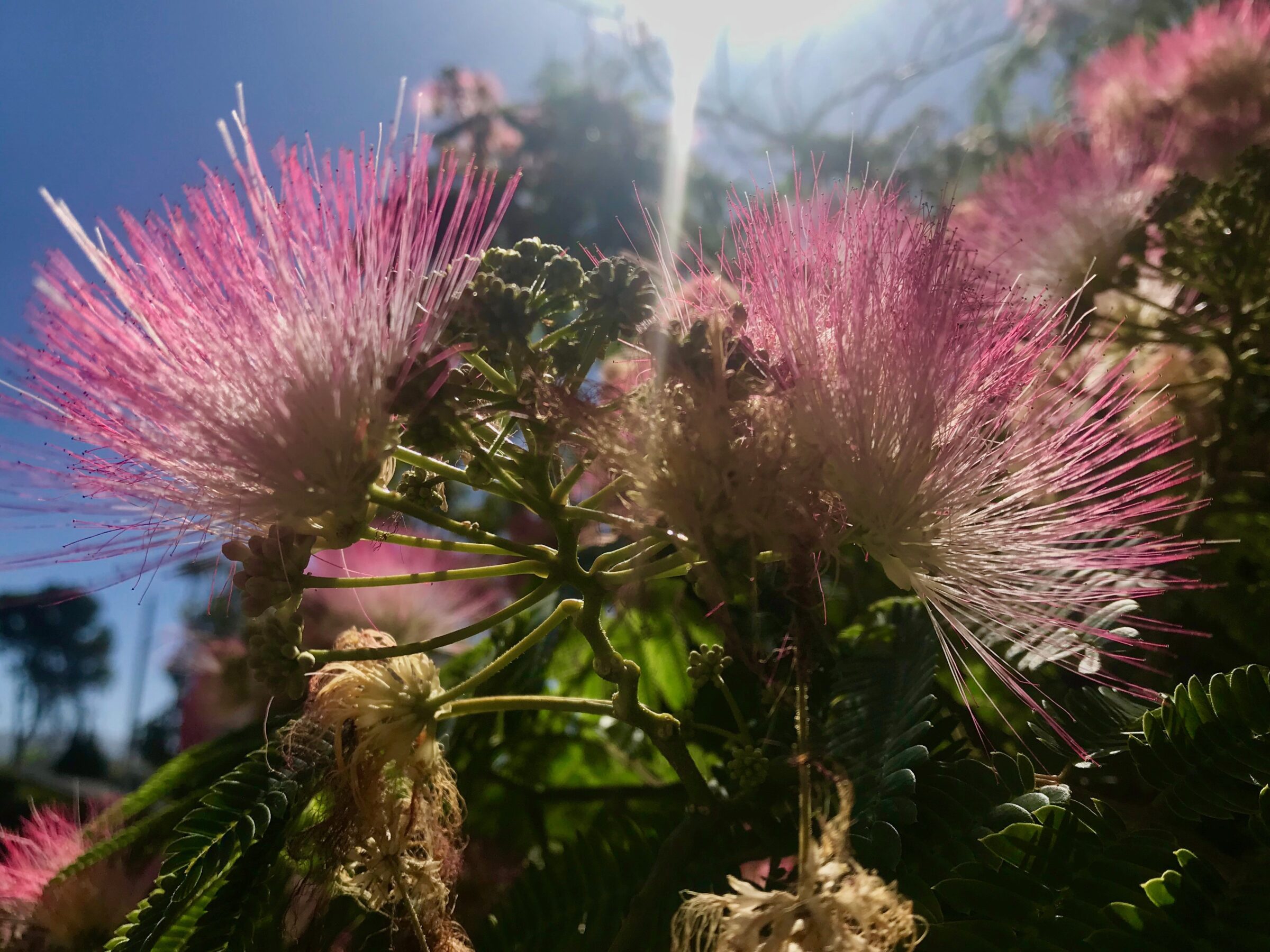Working With and Learning From Nature
The Happiness Tree: Albizia julibrissin

Episode 33: Albizia julibrissin is one of my new favorite trees. Commonly called The Tree of Happiness, Persian Silk Tree, and Mimosa, Albizia is native to Asia and a member of the Fabaceae family. I love its pink puffball flowers, gorgeous fragrance, whimsical nature, and potent medicine.
To learn about Albizia, I spoke with Community Herbalist and Traditional Food Ways Educator Lindsay Kolasa.
Lindsay and I start the interview by acknowledging that in some areas, Albizia julibrissin can be a weedy invasive plant. Albizia is self seeding, thrives in disturbed soil, and has very viable seeds. So please be mindful of planting it- especially if you live in a place where it can easily spread and outcompete native plants. We don’t want to see Albizia out-competing native plants. With this in mind, Lindsay and I talk about invasive plant medicine and why it’s important to learn the traditional uses of these plants.
We then dive into Albizia’s long history of medicinal use. Mentioned in the Shen Nong Ben Cao Materia Medica in the 700’s, Albizia julibrissin was highly valued in traditional Chinese Medicine. Albizia’s flowers and bark are useful in treating insomnia, depression, and anxiety. Albizia is a “calming spirit” herb and promotes feelings of well being, peace, and (you guessed it!) happiness.
Lindsay tells how to sustainably harvest both bark and flowers and prepare them for teas, infusions, and tinctures.
Lindsay Kolasa is originally from New Orleans and Mississippi. She has taught at large conferences, such as the Southeast Women’s Herb Conference and for small groups, such as feisty garden clubs. Lindsay also ran an apothecary in the red, clay hills of eastern Mississippi, where her family stretches back six generations.
To learn more about Lindsay, visit her website at LindsayKolasa.com.
You can read Lindsay’s article about Albizia here.
Podcast: Play in new window | Download (Duration: 50:08 — 46.4MB) | Embed